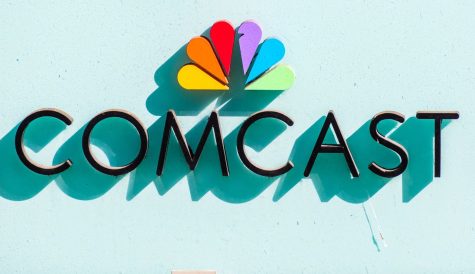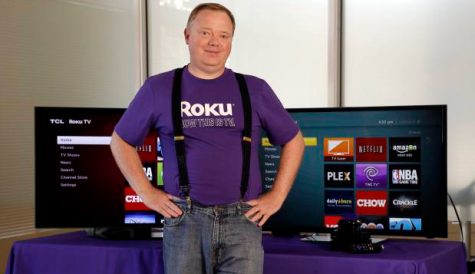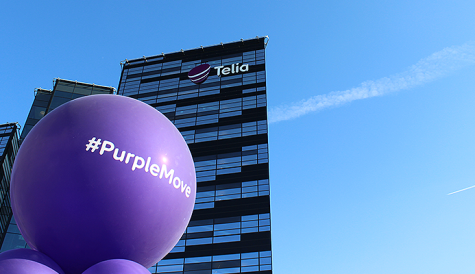Five go over-the-top: OTT service case studies
Over-the-top business models are many and varied – and still largely subject to trial and error. Stuart Thomson and Andy McDonald look at some prominent examples.
OTT is a widely used term. The companies that deliver video over the web to end users often take very different approaches. Five different case studies demonstrate the range of thinking on how to monetise web video and where services sit in relation to traditional free and pay TV services.
Switzerland-based Viewster has moved away from ‘traditional’ subscription and transactional VOD towards a free-to-view advertising-supported model. Sweden-based Voddler has recently revamped its model entirely to focus on delivering an open platform with a technology-based appeal. Online video site Dailymotion, whose business model has traditionally been advertising-based, has added functionality that enables content partners to launch pay services. Magine is offering something more akin to a traditional pay TV service online, while BSkyB is an example of an established pay TV operator that launched an OTT service to target a different demographic.
Viewster: breaking free
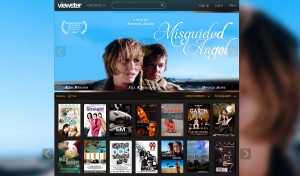 Switzerland-based Viewster has recently pulled away from a traditional VOD and SVOD model, based on marketing a catalogue acquired through specific deals with studios, in favour of a largely advertising-funded free model with the option of paying a transactional fee to watch content without ads.
Switzerland-based Viewster has recently pulled away from a traditional VOD and SVOD model, based on marketing a catalogue acquired through specific deals with studios, in favour of a largely advertising-funded free model with the option of paying a transactional fee to watch content without ads.
“Over the last six months we decided to focus very strongly on free content and ad supported rights rather than transactional rights,” says CEO Kai Henniges. “People are watching blockbusters elsewhere.” In addition, Viewster focused more on getting rights to TV content to complement its movies catalogue. “We put a very strong focus on TV series,” says Henniges.
Henniges says that Viewster is looking to specialise to some extent in niche content that appeals to a range of groups. In Europe, the main focus will be on US TV shows, but in Germany (and also Australia) a key focus will be on UK series.
Viewster has also created a home screen with weekly programming updates, based on a common theme and aligned to 34 country-specific channels. According to Henniges, the platform has also sought to rationalise the amount of content it placed there.
“We have proven we need to help viewers discover and it leads to the question of how much content should you have on the platform if discovery is a challenge,” he says. “If you haven’t discovered something in two minutes you become disgruntled. It’s about quality and uniqueness rather than quantity.”
Henniges says that the platform will keep a couple of key deals in place to deliver early-window content, but that one preoccupation is to get more involved with content providers at an early stage of the production cycle. “We are getting involved in content earlier and getting our users involved and finding out what they want to see. We will create more events around original and exclusive content,” he says, although the specifics of how this will work in practice have yet to be determined.
“The details are just being talked out,” says Henniges. “If you get involved early you have broader rights across more territories.” Viewster will not become a content producer in its own right, but it is keen on the general concept of involving its audience in deciding what content to source and support. “We have got a good profile through our licensing deals and through talking to our 18-35 male-skewed audience. We have become better at listening to them and giving them what they want,” says Henniges.
Viewster gained some momentum through its earlier 14-market deal with Warner Bros and Henniges says he hasn’t given up on transactional VOD entirely. “It’s done us a lot of good but it seems people watch blockbuster movies on other services. Traction is much higher on the free-with-ads side,” he says.
Other models that Viewster has tested have provided insight into what consumers – at least those in the company’s target demographic – are looking for. It previously offered an opportunity to pay to download movies onto mobile devices to watch offline. “That came from our view that people used their mobiles on the road without necessarily having a good connection,” says Henniges. “That was old thinking. The modern thing is people use them at home over WiFi and offline viewing has never been as strong for us as we thought. We have parked that feature so there is no more payment for us on mobile.”
As far as the content mix on the platform is concerned, Henniges says Viewster is looking to the ‘mid-tail’. “We found early on in the life of the company that the long tail doesn’t make money. We have gone as far as eliminating the weaker parts of our service,” he says. “We also found out that blockbusters are by and large watched elsewhere. That leaves us with the ‘mid tail’ where people see in us a role for discovering content they wouldn’t find elsewhere. At the moment we do it traditionally, but in the future we will have our users help us curate and we will listen to them through new tools.”
English-language content (or English subtitles on content) is a common denominator. Henniges sees an emerging market for this among young people internationally who may or may not speak English as a first language.
In order to better serve the ad-funded model, Viewster has recently hired a sales team for its key markets to represent it with big media buying agencies. However the bulk of spot selling is done automatically “by ad servers talking to each other”, he says.
“The video ad is going the route of display ads where advertisers want to know who they are selling their ads to,” says Henniges. “The big potential lies in securing a bigger and bigger part of TV budgets. For that you need a big number of unique users. Then you can slice and dice the audience in real time so you have the right audience for the advertiser at the right time.” Henniges says that a presence on the maximum number of possible end user devices remains an important goal. Eyeballs are still drawn primarily to the web, followed by mobile platforms with connected TV trailing somewhat behind. Henniges says that connected TV was particularly challenging in that it was difficult to get adverts to play across all devices. “Now we are properly monetising our connected TV inventory,” he says.
Henniges says Viewster is targeting people “who have turned their back on free TV – it’s an audience that is so modern that our real competition is YouTube, but YouTube is very broad and content is harder to discover.”
Voddler: shelving & sharing
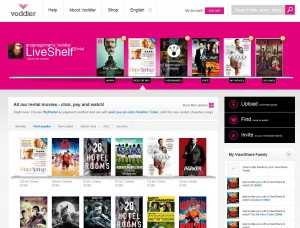 Sweden-based over-the-top video-on-demand provider Voddler has over the past six months transformed its model from a classic retailer of high-value premium content, garnered from deals with the studios, to basing the business on a more technology-focused pitch.
Sweden-based over-the-top video-on-demand provider Voddler has over the past six months transformed its model from a classic retailer of high-value premium content, garnered from deals with the studios, to basing the business on a more technology-focused pitch.
The new-look Voddler is anchored around two services – LiveShelf and ViewShare. LiveShelf allows viewers to assemble a cloud-based shelf of content that they can access from any device. ViewShare allows them to share the content on their shelf with up to 10 friends or relatives for around ?5 a month.
The concept is based on the idea that content owners will provide their wares for LiveShelf – based on rules that they determine for themselves – and consumers can then access them via a mix of free, transactional, subscription and sell-through to any device.
LiveShelf and ViewShare are being beta-tested over the summer with a plan to launch commercially from September.
CEO Marcus Bäcklund says the new model is being trialled against a background of advertising-sponsored, subscription VOD and transactional VOD and electronic sell-through models being constrained by the presence of established players with deep resources and consumer reach. Hulu is backed by its suppliers. Netflix achieved its digital reach on the back of its existing successful DVD mail rental business. Apple benefits from a large base of device users. “We are moving from content deal-dependence to an environment which is more technology and consumer-driven,” says Bäcklund. Voddler is thus appealing to the desire of users to get access to content on multiple devices from the cloud – without the need to fill up their own hard drives – and to share it with friends and relatives rather than by attempting to differentiate its own content offering. Bäcklund says he believes that content deals have become a “commodity”. Voddler has thus focused on building a “high-performance device-agnostic streaming platform in the cloud,” which Bäcklund likens to a shelf that is open at the front to end users and at the back to content providers.
“We need to open up this platform to those end users but also to content holders, aggregators or OTT players who want to deliver content to end users,” he says. If people wish to share the professional content they subscribe to with up to 10 friends or family, they can do so after paying a subscription fee for ViewShare. Users can also upload their own content to LiveShelf, including DVDs and digital content they have already purchased.
The service is now available in over 40 countries, though with a relatively low number of average viewers per territory. Bäcklund nevertheless says his goal is to attract “several million” users by the end of this year.
Aside from ViewShare, Voddler continues to monetise content using traditional models: “The important thing is that it is the content holder that is in control. He decides on the model and we make sure he has a shelf to put the titles on. We only take a small commission. If he wants to do transactional VOD or SVOD that is his call. This is very different from traditional VOD wholesale players.”
The new platform is being beta-tested until September, and Bäcklund says the company will experiment and change things to see what works and what doesn’t. He says the reaction from content providers about the ViewShare element has ranged from outright hostility to deep enthusiasm, with independent producers and content providers more likely to fall into the latter camp. During the beta phase of deployment Voddler will continue to implement third-party security features such as watermarking and fingerprinting to give further reassurance to nervous content partner or potential partners.
“More and more content owners understand there is massive illegal cloud view-sharing going on, so why not monetise this by allowing some controlled sharing? We have time on our side,” he says. Bäcklund claims that the number of people caught abusing the platform by uploading illegally acquired content has been “surprisingly low”.
Voddler is fully committed to the new model and Bäcklund says it is in the process of terminating its legacy content deals with studios. He says Voddler is signing up content providers for the new model, both for movies and for TV shows.
“My ambition is to make my cloud as extensive and full of content as all the piracy clouds together on the internet,” says Bäcklund.
Dailymotion: open house
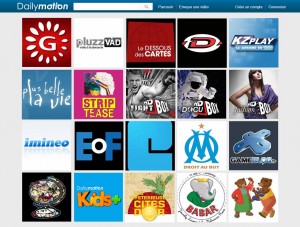 Dailymotion, the Orange-owned French rival to YouTube, with 115 million unique visitors and 2.5 billion monthly video views, has a much broader remit than niche-targeting OTT VOD services, but Vincent Martin, vice-president of distribution and business development at the online video site says that the company’s goal is to “provide all tools to enable content partners to monetise their videos”.
Dailymotion, the Orange-owned French rival to YouTube, with 115 million unique visitors and 2.5 billion monthly video views, has a much broader remit than niche-targeting OTT VOD services, but Vincent Martin, vice-president of distribution and business development at the online video site says that the company’s goal is to “provide all tools to enable content partners to monetise their videos”.
By the end of the year, Dailymotion will launch in Turkey a subscription video-on-demand service, Dailymotion+, in partnership with MDC Digital, a major local media player and said it would consider launching similar services in other territories.
Dailymotion had earlier launched OpenVOD, a part of the site that allows third-party content providers to create pay-per-view services. Dailymotion also has a number of other premium services, including a kids SVOD service in France, Belgium and Switzerland in partnership with DHX Media, which gives access to more than 1000 kids shows for ?4,49 a month. It has also worked with public broadcaster France Télévisions and French-German channel Arte on new paid services.
Martin says that Dailymotion will enable a “full variety of business models” – whether based on advertising revenue share or on a transactional or subscription basis. Typically, Dailymotion has taken a 30% cut on Open VOD and 50% on advertising. OpenVOD and similar initiatives remain small for the moment in terms of overall revenue compared with Dailymotion’s advertising-based income. “Compared to our main business, OpenVOD is just starting. It is not at the same scale,” says Martin. “Because we wanted something great, we launched with just a few content partners in early 2012. We tested it for a year and a half, and now it is developing very fast.” As well as content for the French market – film studio Gaumont recently launched on the platform with a catalogue of 100 videos – Dailymotion has signed up partners such as Eurochannel and others targeting diaspora groups and international audiences. The revenue-share business model means that content providers can sign up without incurring upfront costs. They can embed the player on their own websites and create a VOD app in a very short timeframe.
Key to the Dailymotion model is putting the content provider in control of how its content should be presented and monetised, says Martin. Dailymotion provides the technical infrastructure for distribution, including adaptive bit-rate encoding. Martin says the company cautions partners against creating too heavy a DRM regime around their content.
“We try to focus on providing a smooth user experience that’s to the benefit of everyone,” he says. This includes enabling the creation of mobile apps “with a few clicks” via the platform provided by Paris-based app technology provider Joshfire, which Dailymotion formed a partnership with in October . For connected TV apps, Dailymotion has just teamed up with Opera Software as the first partner to use its Opera TV Snap technology. This allows content owners to repurpose online video channels into HTML5 apps for the Opera TV Store, a smart TV app storefront that is supported by a range of major TV and set-top manufacturers.
“We only provide the player – all the elements of the apps are made by our content partners,” says Martin.
Even for content that is not part of OpenVOD or another of the site’s non-advertising based initiatives, Dailymotion has attempted to aggregate channels and make the user experience as close to TV as possible. It has also added personalised recommendation through the use of algorithms as well as delivering editorialised recommendation, which Martin says is particularly important for premium content.
Martin says that Dailymotion will continue to explore new “verticals” – essentially thematic channels – following its launch of a kids section. “We will have more defined channels. We want to make the content even easier to access,” he says
For all its new emphasis on premium offerings, Dailymotion will remain primarily about advertising and about free-to-view video,. “We don’t want to become a pay TV offering. We are exploring business models and, as an innovative company, we have to explore all models,” Martin says. “We’re exploring models with our content partners. They asked for the OpenVOD service and we are working with them on that, as we are working with all our distribution partners in order to know what they want and what they need and to find the right model for them.”
Magine: taking TV out of TV
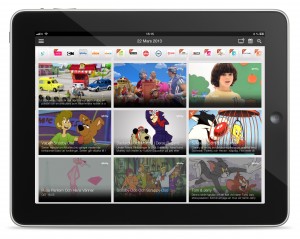 Magine is a new player in the online TV space but is already making waves with its cloud TV service. Billing itself as ‘TV as it should be’ the subscription service goes over the top to deliver a live linear offering that includes backwards EPG and search options to let viewers easily choose between live and on-demand content.
Magine is a new player in the online TV space but is already making waves with its cloud TV service. Billing itself as ‘TV as it should be’ the subscription service goes over the top to deliver a live linear offering that includes backwards EPG and search options to let viewers easily choose between live and on-demand content.
Explaining the thinking behind the service, which launched in its home market of Sweden earlier this year, co-founder and CEO Matthias Hjelmstedt says Magine intends not to take the strength away from what TV can offer, but rather to “enhance the weaknesses” that TV suffers from.
“It’s more important to find something to watch than searching for the perfect item to watch, and that’s generally why TV is working so well, why TV is still so big. Because if you look at TV and what broadcasters and TV channels used to do, they put a lot of time and effort in creating a timescale over a day that perfectly caters to a target group on different timeslots,” says Hjelmstedt.
“The problem with television is that in general you can watch television in one place – your TV set with your set-top box. The second that something has been aired, it’s gone, if you didn’t remember to record it to your set-top box. Then you have to go to another catch-up service to find it, in a place outside of your television. So you are fragmenting the world instead of making it easier for users. That was what we said – let’s look at how that works.”
Following three years of development, Magine’s in-house platform is available on Apple devices and in Samsung smart TVs, with more TV platforms and Android tablets on the way. The service is also now available in Sweden, Spain, is in beta-testing in Germany with a full launch to follow there by late summer, and is looking to add more territories in the future.
In terms of content, currently in Sweden Magine plays host to big name channel brands like Discovery, CNN International, BBC, Eurosport, National Geographic, Nickelodeon and Cartoon Network as well as home national broadcasters SVT and TV4. However, Hjelmstedt admits that it’s taken “some time” to get to this point.
“We said from the beginning, let’s do it right – let’s sit down and let’s work with the broadcasters, let’s look at what is good for them, and not just for consumers. The best product you can build for a consumer is one that is very easy to navigate, that has an excellent UI, but also has all the content that they want. If you can’t see the content, the rest doesn’t really matter,” says Hjelmstedt. “Then we also looked into the revenue streams of TV and said ‘let’s enhance them for the broadcaster.’ Let’s not try to go there and take their lunch, let’s give them a better offering. When we started to do that, sitting down with all of them, explaining what we’re doing, where we are in the value chain and what we’re enhancing, it actually has gone better than expected.”
In some respects, Magine’s model is typical of traditional pay TV operators – to license channels and to pay a per-subscriber fee. “It’s very easy for any broadcaster, any content owner to understand what we are, because they are already used to this revenue stream,” says Hjelmstedt.
Yet in an online world, where broadcasters and third party operators are all jockeying for attention with their VOD services, is there ever a conflict of interests between the two?
Hjelmstedt says that while local broadcasters have been busy building catch-up services, in only making content available from their own networks these individual destinations cannot compete with live TV or online aggregators.
“The ones who feel more competition [from Magine] are private broadcasters that invest a lot of money in their own platform, but we haven’t really had any major problems with that. If you’re not an incumbent and you buy content, the most important thing for you is distribution. If you can’t control 100% of the distribution yourself, there’s always part of the population that doesn’t use your service – you need aggregation. Because buying content is expensive, and the more distribution you get, the more money you can earn from the content,” says Hjelmstedt.
While content negotiations are still ongoing, Hjelmstedt says that Magine does not have “any locked situations” and has a strong basic offering with full catch-up from a range of networks. However, one thing the service is looking at is offering additional channels or bundles at additional cost.
“Having a base offering is very important, because it makes the selection very easy for users. But on top of that, or at the side of that, we will offer full a la carte in the future,” says Hjelmstedt, adding that Magine is looking to add more niche channels, for example Horse and Country TV, which is now live on the service in Sweden.
“In the regular cable, terrestrial, or even satellite world, the amount of channels that you can carry [is decided] by the frequencies you are able to have, which means that you are always limiting yourself and your customers in what content they will be able to see. We don’t have that problem, so we have the possibility to add in a lot of channels that have a very hard time getting distribution, but have very good, niche target groups,” says Hjelmstedt. “In a couple of months time I think that there will be a lot of channels in Magine that you actually can’t access through your regular [TV] subscription – also transnational channels. So in the long run, the Magine offering will be much better than you can expect from a regular subscription.”
Though Magine is competing with a range of VOD and OTT offerings, including the likes of Netflix, which is continuing its European expansion, Hjelmstedt believes that adding live linear content to the mix helps to differentiate it, as this is where most eyeballs are still drawn. “The most important thing is for a user to have something good to watch. [In terms of] the way to get there, linear broadcast is still the best, or scheduled TV. Because if you look at user numbers, that’s what people tune in to, and then they start turning to other things,” says Hjelmstedt. “So at any given moment you have 15-20,000 things to watch in Magine, which is as big as any VOD service. But it’s changing every hour. So we’re seeing that the usage numbers in Magine, per user, are much higher than video-on-demand players. Because it’s TV, and people think about it as TV.”
Sky’s double online play
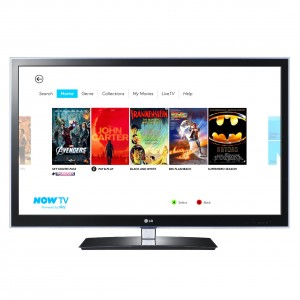 UK operator BSkyB has embraced the multiscreen, not only with its anytime, anywhere live TV and VOD service, Sky Go, but also with its pure-play OTT solution, Now TV. Launched last year, the latter is designed to take Sky’s premium content, but to open it up to a new segment of the market, pitting itself against the likes of Netflix and Amazon-owned Lovefilm.
UK operator BSkyB has embraced the multiscreen, not only with its anytime, anywhere live TV and VOD service, Sky Go, but also with its pure-play OTT solution, Now TV. Launched last year, the latter is designed to take Sky’s premium content, but to open it up to a new segment of the market, pitting itself against the likes of Netflix and Amazon-owned Lovefilm.
BSkyB product developer Gareth Capon, who works across the broadcaster’s mobile applications, explains that the “fourteen million homes that don’t take a pay TV service are the target market for Now TV. We can get a more flexible IP-based offering into those homes, and give people the chance to experience and enjoy Sky Movies and Sky Sports content.”
Initially launching in 2012 with content from Sky’s premium movie channels, Sky added pay-as-you-go live sports content to Now TV in March, and plans to include entertainment content from Sky later this year. Currently the movies offer costs £15 (?17.40) per-month after an £8.99 three-month trial, while a day-pass for sports content costs £9.99. Although Now TV means Sky customers can, for the first time, watch its content without being obliged to sign up to a contract, Capon says that Sky does not run the risk of undermining its core business.
“People will always talk about cannibalisation when you launch a service like this. My view is that the market is large, if more than half of the UK’s homes don’t take a pay TV service, that’s a significant market for the premium content that we have at Sky,” says Capon. “The market is there to be grown, because I don’t believe we’re anywhere near saturation on the demand for premium content across the UK. That’s what Now TV offers to its customers.”
Similarly Capon believes that the rising popularity of services like Netflix in the UK market is not a threat to Sky. “We’ve always welcomed competition in any sector, in any market, and I think that what this proves is that demand for consumption of IP-based platforms is there. People have these devices, they want access to content, they want access to different types of services, particularly on-demand services on those devices, which is a great opportunity.”
That demand for multi-platform access can perhaps most clearly be seen with the success, to date, of Sky Go. In less than two years, Capon says that this now has more than 3.2 million customer registrations – “almost a third of our household base in the country.”
“It’s an incredible success really, it’s a core part of the Sky offering now for our customers and is in line with their demands for multi-platform consumption on a variety of devices,” he says.
Sky Go now offers its customer more than 40 live linear channels, with Capon claiming that Sky “at least tripled the number of channels on the service since launch.” Alongside this, it also offers on-demand content that includes more than 600 movie titles – free to Movies Pack subscribers.
“There probably is a growing expectation for people that they can get access to content on multiple devices, but at the same time, I still feel people really recognise that Sky Go is a quality service for customers. The flexibility, the breadth of content and the channels that we have – I don’t think there’s anyone who can offer that scale and that breadth on any other service in the UK,” says Capon.
The launch of Sky Go Extra earlier this year has also added an extra business model to Sky’s OTT and VoD offering. For £5 extra per month, Sky Go customers can now download content to their mobile, laptop or tablet to watch offline, and register up to four devices with the service. “It’s a new revenue line for our business,” says Capon, adding “it’s something people are certainly willing to pay for.”
Yet in spite of the rising interest in Sky’s online services, and the growth of the OTT market in general, Capon does not see online overtaking or becoming more important than its core satellite-based pay TV offering. “There’s no need to make bets on technology in that way, or predictions about technology,” he says.
“We want to deliver high-quality, flexible content services to our customers and we’ll pick the best platforms to do that,” says Capon. “The combination of satellite and internet-based services, including obviously the mobile networks for Sky Go – that’s the best way of doing that today. I think we’ll continue to look at what platforms and infrastructure are available and make use of the best ones to get our content out to our customers.”

